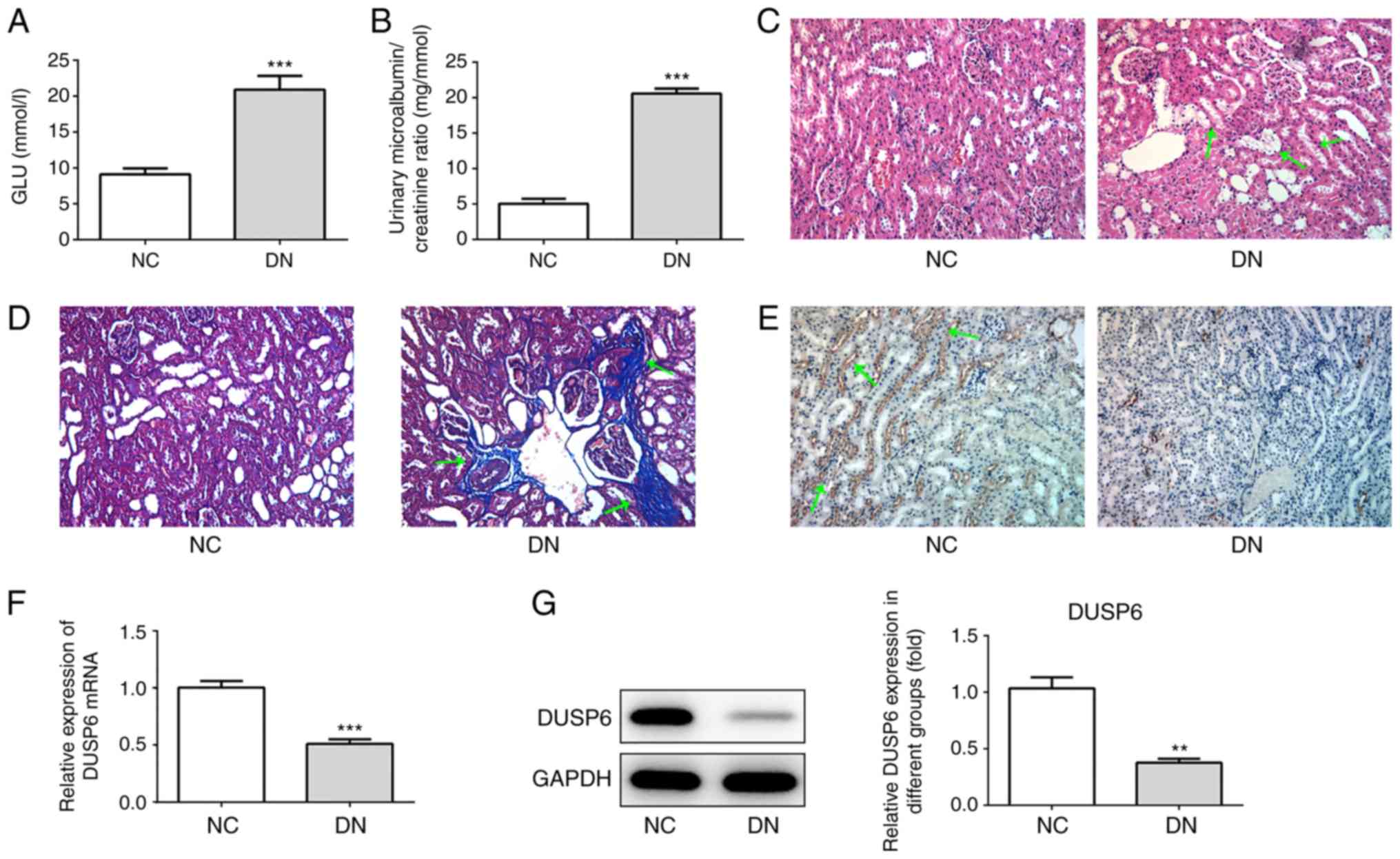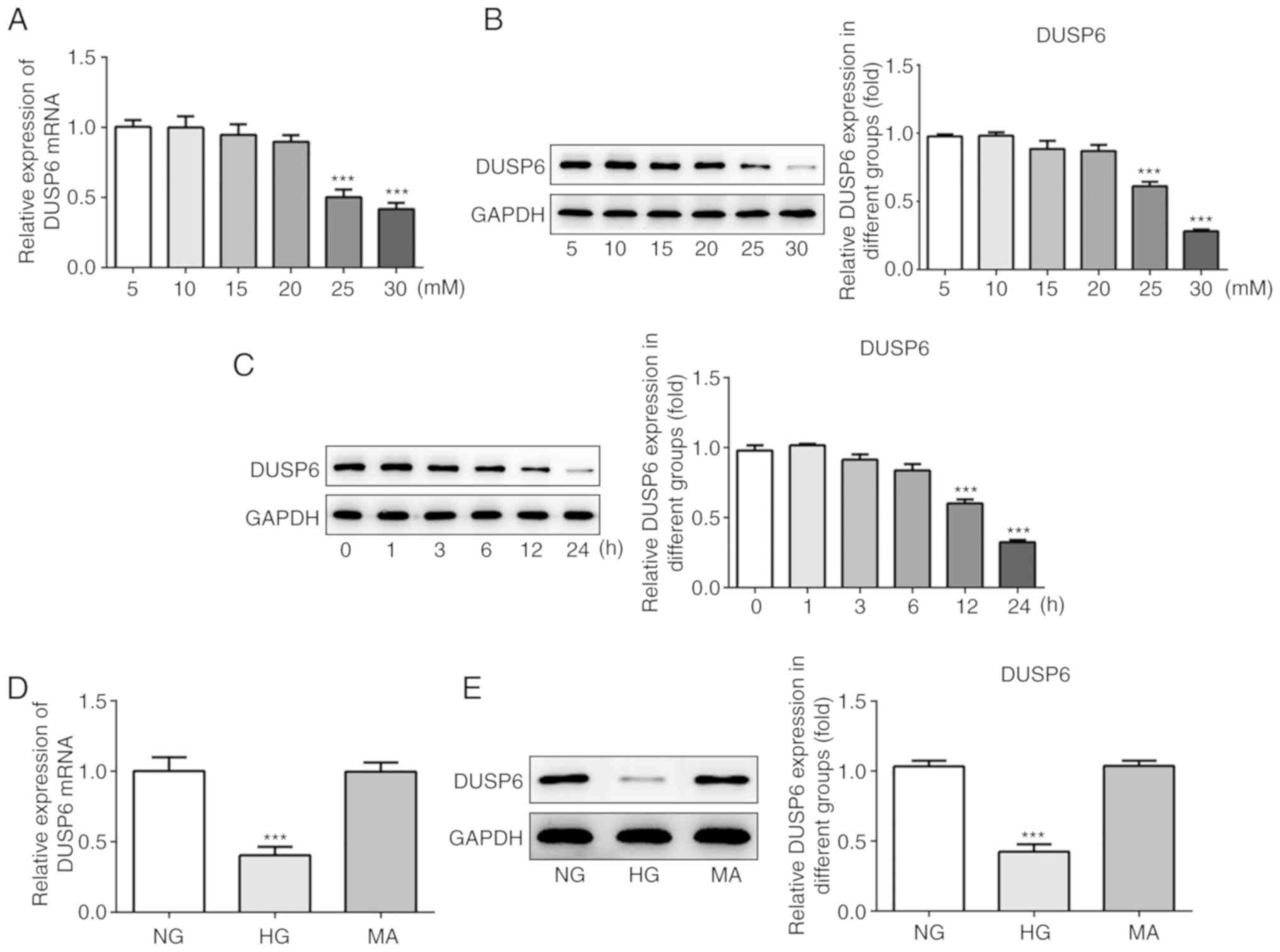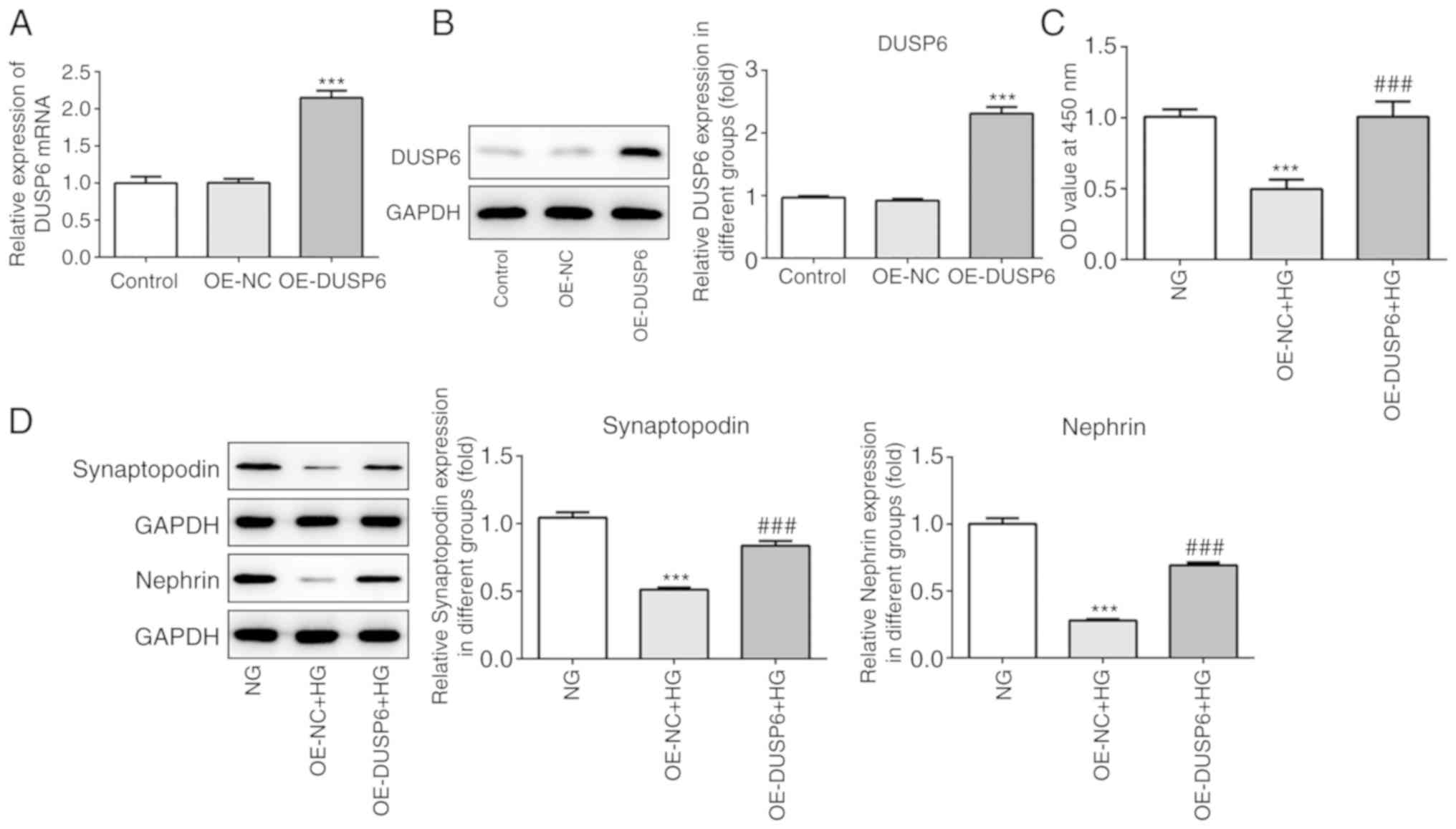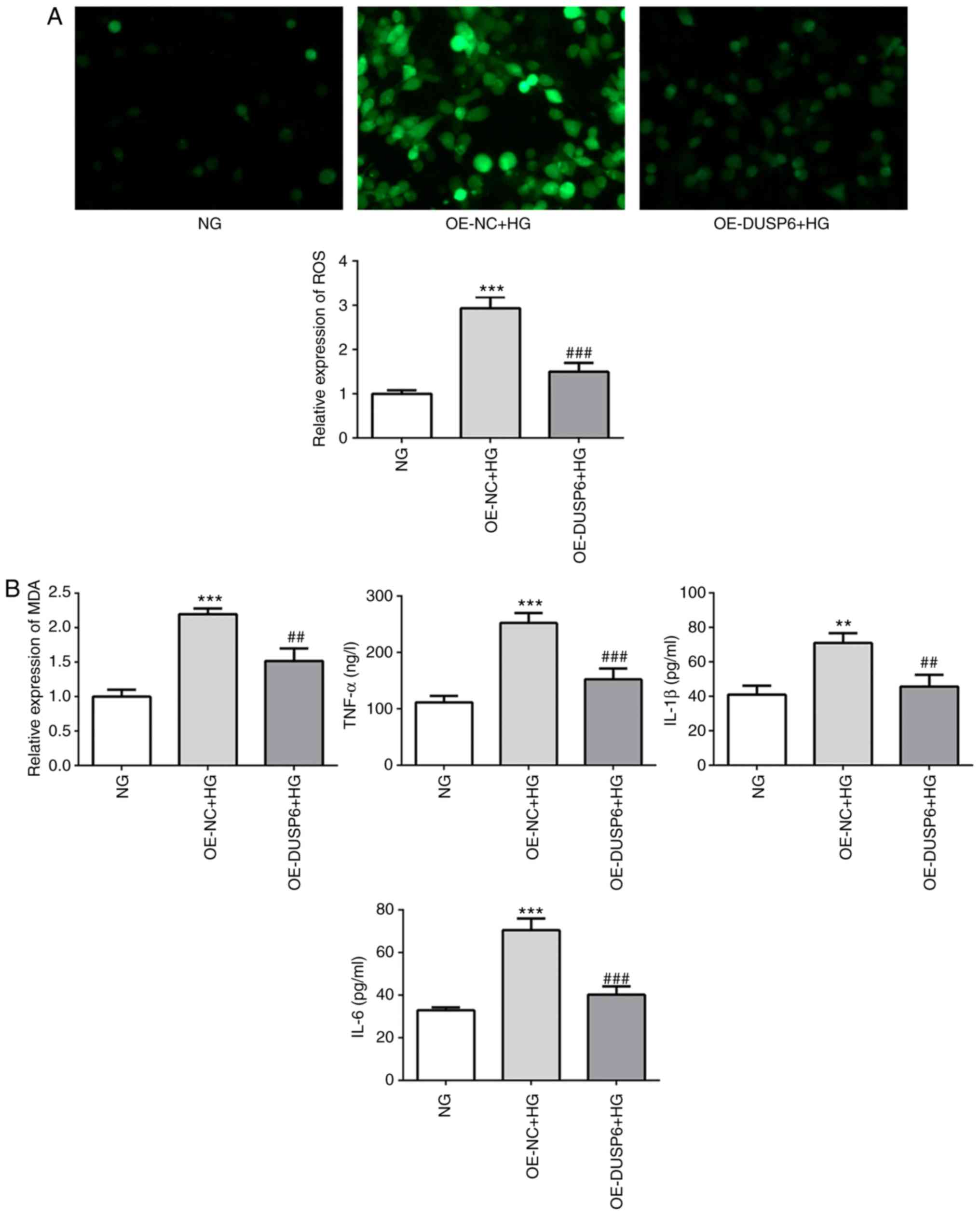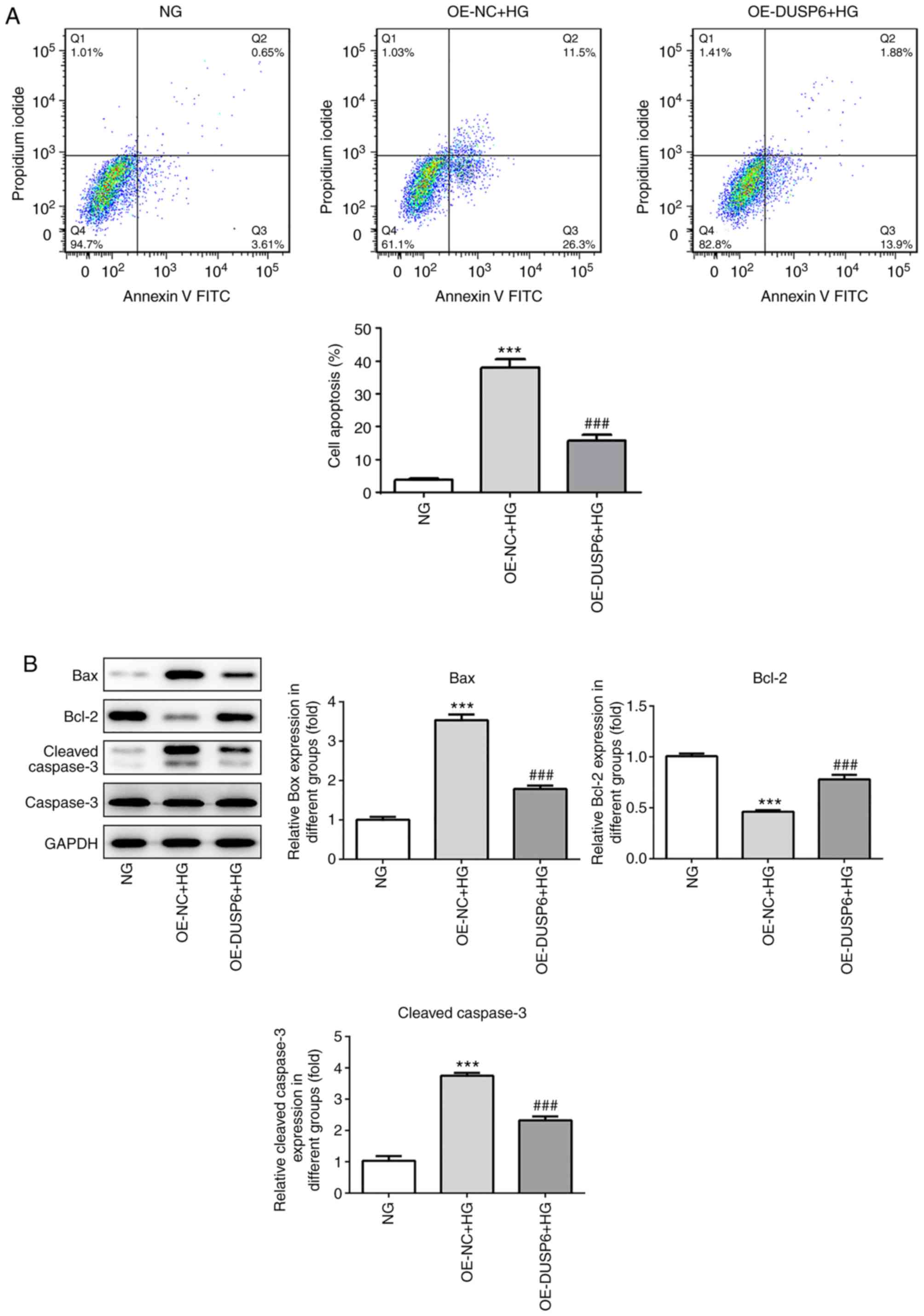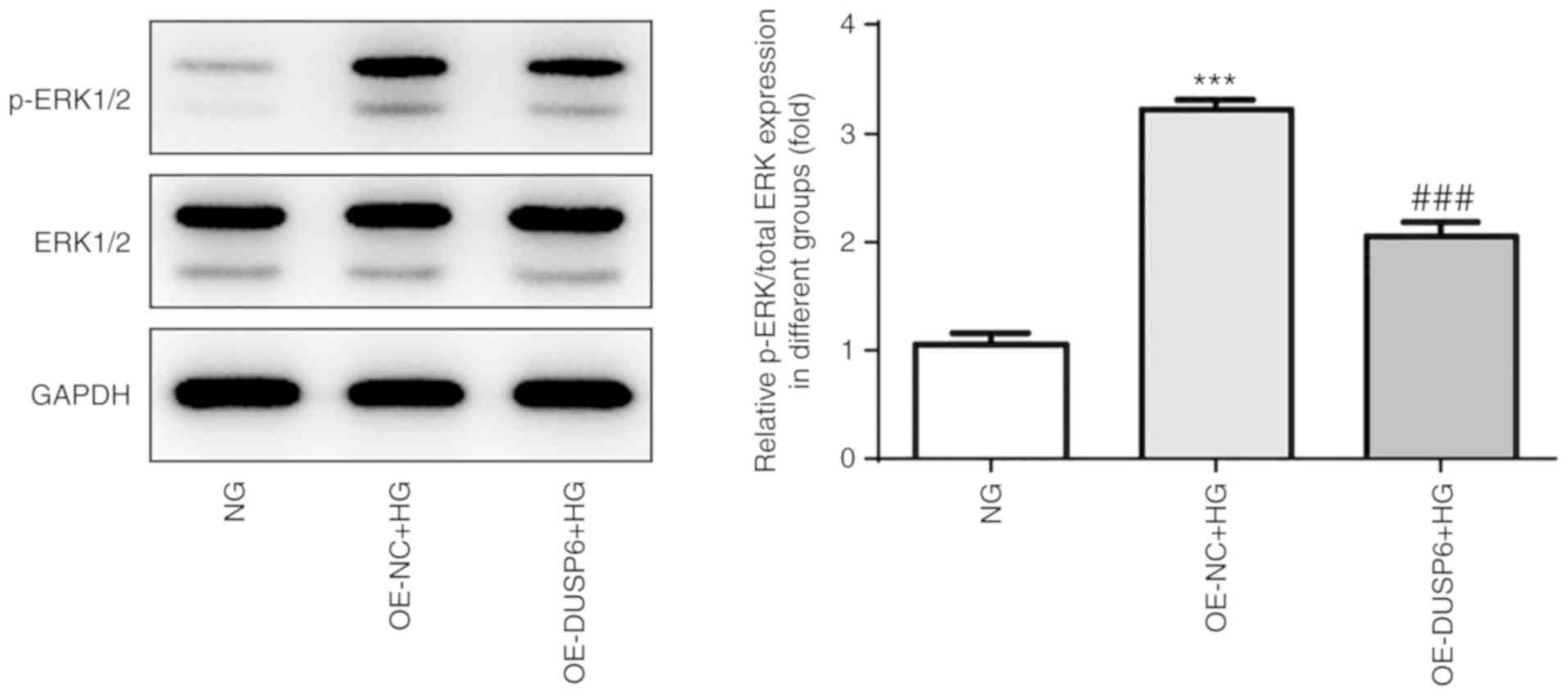|
1
|
Farag YM and Al Wakeel JS: Diabetic
nephropathy in the Arab Gulf countries. Nephron Clin Pract.
119:c317–c322, discussion c322-c323. 2011. View Article : Google Scholar : PubMed/NCBI
|
|
2
|
Pagtalunan ME, Miller PL, Jumping-Eagle S,
Nelson RG, Myers BD, Rennke HG, Coplon NS, Sun L and Meyer TW:
Podocyte loss and progressive glomerular injury in type II
diabetes. J Clin Invest. 99:342–348. 1997. View Article : Google Scholar : PubMed/NCBI
|
|
3
|
Susztak K, Raff AC, Schiffer M and
Böttinger EP: Glucose-induced reactive oxygen species cause
apoptosis of podocytes and podocyte depletion at the onset of
diabetic nephropathy. Diabetes. 55:225–233. 2006. View Article : Google Scholar : PubMed/NCBI
|
|
4
|
Meyer TW, Bennett PH and Nelson RG:
Podocyte number predicts long-term urinary albumin excretion in
Pima Indians with Type II diabetes and microalbuminuria.
Diabetologia. 42:1341–1344. 1999. View Article : Google Scholar : PubMed/NCBI
|
|
5
|
Jefferson JA, Shankland SJ and Pichler RH:
Proteinuria in diabetic kidney disease: A mechanistic viewpoint.
Kidney Int. 74:22–36. 2008. View Article : Google Scholar : PubMed/NCBI
|
|
6
|
Lu H, Li Y, Zhang T, Liu M, Chi Y, Liu S
and Shi Y: Salidroside reduces high-glucose-induced podocyte
apoptosis and oxidative stress via upregulating heme oxygenase-1
(HO-1) expression. Med Sci Monit. 23:4067–4076. 2017. View Article : Google Scholar : PubMed/NCBI
|
|
7
|
Zhu L, Han J, Yuan R, Xue L and Pang W:
Berberine ameliorates diabetic nephropathy by inhibiting TLR4/NF-κB
pathway. Biol Res. 51:92018. View Article : Google Scholar : PubMed/NCBI
|
|
8
|
Guo J, Li J, Zhao J, Yang S, Wang L, Cheng
G, Liu D, Xiao J, Liu Z and Zhao Z: MiRNA-29c regulates the
expression of inflammatory cytokines in diabetic nephropathy by
targeting tristetraprolin. Sci Rep. 7:23142017. View Article : Google Scholar : PubMed/NCBI
|
|
9
|
Haraldsson B: A new era of
podocyte-targeted therapy for proteinuric kidney disease. N Engl J
Med. 369:2453–2454. 2013. View Article : Google Scholar : PubMed/NCBI
|
|
10
|
Chen HF, Chuang HC and Tan TH: Regulation
of Dual-Specificity Phosphatase (DUSP) Ubiquitination and Protein
Stability. Int J Mol Sci. 20:26682019. View Article : Google Scholar
|
|
11
|
Farooq A and Zhou MM: Structure and
regulation of MAPK phosphatases. Cell Signal. 16:769–779. 2004.
View Article : Google Scholar : PubMed/NCBI
|
|
12
|
Huang CY and Tan TH: DUSPs, to MAP kinases
and beyond. Cell Biosci. 2:242012. View Article : Google Scholar : PubMed/NCBI
|
|
13
|
Lin HP, Ho HM, Chang CW, Yeh SD, Su YW,
Tan TH and Lin WJ: DUSP22 suppresses prostate cancer proliferation
by targeting the EGFR-AR axis. FASEB J. 33:14653–14667. 2019.
View Article : Google Scholar : PubMed/NCBI
|
|
14
|
Chen YR, Chou HC, Yang CH, Chen HY, Liu
YW, Lin TY, Yeh CL, Chao WT, Tsou HH, Chuang HC, et al: Deficiency
in VHR/DUSP3, a suppressor of focal adhesion kinase, reveals its
role in regulating cell adhesion and migration. Oncogene.
36:6509–6517. 2017. View Article : Google Scholar : PubMed/NCBI
|
|
15
|
Messina S, Frati L, Leonetti C, Zuchegna
C, Di Zazzo E, Calogero A and Porcellini A: Dual-specificity
phosphatase DUSP6 has tumor-promoting properties in human
glioblastomas. Oncogene. 30:3813–3820. 2011. View Article : Google Scholar : PubMed/NCBI
|
|
16
|
Song H, Wu C, Wei C, Li D, Hua K, Song J,
Xu H, Chen L and Fang L: Silencing of DUSP6 gene by RNAi-mediation
inhibits proliferation and growth in MDA-MB-231 breast cancer
cells: An in vitro study. Int J Clin Exp Med. 8:10481–10490.
2015.PubMed/NCBI
|
|
17
|
Furukawa T, Sunamura M, Motoi F, Matsuno S
and Horii A: Potential tumor suppressive pathway involving
DUSP6/MKP-3 in pancreatic cancer. Am J Pathol. 162:1807–1815. 2003.
View Article : Google Scholar : PubMed/NCBI
|
|
18
|
Wong VC, Chen H, Ko JM, Chan KW, Chan YP,
Law S, Chua D, Kwong DL, Lung HL, Srivastava G, et al: Tumor
suppressor dual-specificity phosphatase 6 (DUSP6) impairs cell
invasion and epithelial-mesenchymal transition (EMT)-associated
phenotype. Int J Cancer. 130:83–95. 2012. View Article : Google Scholar : PubMed/NCBI
|
|
19
|
Ahmad MK, Abdollah NA, Shafie NH, Yusof NM
and Razak SRA: Dual-specificity phosphatase 6 (DUSP6): A review of
its molecular characteristics and clinical relevance in cancer.
Cancer Biol Med. 15:14–28. 2018. View Article : Google Scholar : PubMed/NCBI
|
|
20
|
Huang L, Litjens NHR, Kannegieter NM,
Klepper M, Baan CC and Betjes MGH: pERK-dependent defective
TCR-mediated activation of CD4(+) T cells in end-stage renal
disease patients. Immun Ageing. 14:142017. View Article : Google Scholar : PubMed/NCBI
|
|
21
|
Beaudry K, Langlois MJ, Montagne A, Cagnol
S, Carrier JC and Rivard N: Dual-specificity phosphatase 6 deletion
protects the colonic epithelium against inflammation and promotes
both proliferation and tumorigenesis. J Cell Physiol.
234:6731–6745. 2019. View Article : Google Scholar : PubMed/NCBI
|
|
22
|
Liao W, Zheng Y, Fang W, Liao S, Xiong Y,
Li Y, Xiao S, Zhang X and Liu J: Dual specificity phosphatase 6
protects neural stem cells from β-amyloid-induced cytotoxicity
through ERK1/2 inactivation. Biomolecules. 8:1812018. View Article : Google Scholar
|
|
23
|
Neumann UH, Ho JSS, Chen S, Tam YYC,
Cullis PR and Kieffer TJ: Lipid nanoparticle delivery of glucagon
receptor siRNA improves glucose homeostasis in mouse models of
diabetes. Mol Metab. 6:1161–1172. 2017. View Article : Google Scholar : PubMed/NCBI
|
|
24
|
Tang H, Lei CT, Ye C, Gao P, Wan C, Chen
S, He FF, Wang YM, Su H and Zhang C: MDM2 is implicated in
high-glucose-induced podocyte mitotic catastrophe via Notch1
signalling. J Cell Mol Med. 21:3435–3444. 2017. View Article : Google Scholar : PubMed/NCBI
|
|
25
|
Livak KJ and Schmittgen TD: Analysis of
relative gene expression data using real-time quantitative PCR and
the 2(-Delta Delta C(T)) Method. Methods. 25:402–408. 2001.
View Article : Google Scholar : PubMed/NCBI
|
|
26
|
Brosius FC III, Alpers CE, Bottinger EP,
Breyer MD, Coffman TM, Gurley SB, Harris RC, Kakoki M, Kretzler M,
Leiter EH, et al Animal Models of Diabetic Complications
Consortium, : Mouse models of diabetic nephropathy. J Am Soc
Nephrol. 20:2503–2512. 2009. View Article : Google Scholar : PubMed/NCBI
|
|
27
|
Hu M, Wang R, Li X, Fan M, Lin J, Zhen J,
Chen L and Lv Z: LncRNA MALAT1 is dysregulated in diabetic
nephropathy and involved in high glucose-induced podocyte injury
via its interplay with β-catenin. J Cell Mol Med. 21:2732–2747.
2017. View Article : Google Scholar : PubMed/NCBI
|
|
28
|
Liu R and Molkentin JD: Regulation of
cardiac hypertrophy and remodeling through the dual-specificity
MAPK phosphatases (DUSPs). J Mol Cell Cardiol. 101:44–49. 2016.
View Article : Google Scholar : PubMed/NCBI
|
|
29
|
Patterson KI, Brummer T, OBrien PM and
Daly RJ: Dual-specificity phosphatases: Critical regulators with
diverse cellular targets. Biochem J. 418:475–489. 2009. View Article : Google Scholar : PubMed/NCBI
|
|
30
|
Lu N and Malemud CJ: Extracellular
signal-regulated kinase: a regulator of cell growth, inflammation,
chondrocyte and bone cell receptor-mediated gene expression. Int J
Mol Sci. 20:37922019. View Article : Google Scholar
|
|
31
|
Karimi P, Gheisari A, Gasparini SJ,
Baharvand H, Shekari F, Satarian L and Ader M: Crocetin prevents
RPE cells from oxidative stress through protection of cellular
metabolic function and activation of ERK1/2. Int J Mol Sci.
21:29492020. View Article : Google Scholar
|
|
32
|
Zou J, Lei T, Guo P, Yu J, Xu Q, Luo Y, Ke
R and Huang D: Mechanisms shaping the role of ERK1/2 in cellular
senescence (Review). Mol Med Rep. 19:759–770. 2019.PubMed/NCBI
|
|
33
|
Sheng J, Li H, Dai Q, Lu C, Xu M, Zhang J
and Feng J: DUSP1 recuses diabetic nephropathy via repressing
JNK-Mff-mitochondrial fission pathways. J Cell Physiol.
234:3043–3057. 2019. View Article : Google Scholar : PubMed/NCBI
|
|
34
|
Huang F, Sheng XX and Zhang HJ: DUSP26
regulates podocyte oxidative stress and fibrosis in a mouse model
with diabetic nephropathy through the mediation of ROS. Biochem
Biophys Res Commun. 515:410–416. 2019. View Article : Google Scholar : PubMed/NCBI
|
|
35
|
Wu S, Wang Y, Sun L, Zhang Z, Jiang Z, Qin
Z, Han H, Liu Z, Li X, Tang A, et al: Decreased expression of
dual-specificity phosphatase 9 is associated with poor prognosis in
clear cell renal cell carcinoma. BMC Cancer. 11:4132011. View Article : Google Scholar : PubMed/NCBI
|
|
36
|
Gu W, Yuan Y, Wang L, Yang H, Li S, Tang Z
and Li Q: Long non-coding RNA TUG1 promotes airway remodelling by
suppressing the miR-145-5p/DUSP6 axis in cigarette smoke-induced
COPD. J Cell Mol Med. 23:7200–7209. 2019. View Article : Google Scholar : PubMed/NCBI
|
|
37
|
Fan MJ, Liang SM, He PJ, Zhao XB, Li MJ
and Geng F: Dusp6 inhibits epithelial-mesenchymal transition in
endometrial adenocarcinoma via ERK signaling pathway. Radiol Oncol.
53:307–315. 2019. View Article : Google Scholar : PubMed/NCBI
|
|
38
|
Li J, Yang C, Yang J and Zou L:
Down-regulation of CCL17 in cancer-associated fibroblasts inhibits
cell migration and invasion of breast cancer through ERK1/2
pathway. Cancer Manag Res. 11:7439–7453. 2019. View Article : Google Scholar : PubMed/NCBI
|
|
39
|
James NE, Beffa L, Oliver MT, Borgstadt
AD, Emerson JB, Chichester CO, Yano N, Freiman RN, DiSilvestro PA
and Ribeiro JR: Inhibition of DUSP6 sensitizes ovarian cancer cells
to chemotherapeutic agents via regulation of ERK signaling response
genes. Oncotarget. 10:3315–3327. 2019. View Article : Google Scholar : PubMed/NCBI
|
|
40
|
Habibian JS, Jefic M, Bagchi RA, Lane RH,
McKnight RA, McKinsey TA, Morrison RF and Ferguson BS: DUSP5
functions as a feedback regulator of TNFα-induced ERK1/2
dephosphorylation and inflammatory gene expression in adipocytes.
Sci Rep. 7:128792017. View Article : Google Scholar : PubMed/NCBI
|
|
41
|
Ye P, Xiang M, Liao H, Liu J, Luo H, Wang
Y, Huang L, Chen M and Xia J: Dual-specificity phosphatase 9
protects against nonalcoholic fatty liver disease in mice through
ASK1 suppression. Hepatology. 69:76–93. 2019. View Article : Google Scholar : PubMed/NCBI
|
|
42
|
Barajas-Espinosa A, Basye A, Angelos MG
and Chen CA: Modulation of p38 kinase by DUSP4 is important in
regulating cardiovascular function under oxidative stress. Free
Radic Biol Med. 89:170–181. 2015. View Article : Google Scholar : PubMed/NCBI
|
|
43
|
Vo AH, Swaggart KA, Woo A, Gao QQ,
Demonbreun AR, Fallon KS, Quattrocelli M, Hadhazy M, Page PGT, Chen
Z, et al: Dusp6 is a genetic modifier of growth through enhanced
ERK activity. Hum Mol Genet. 28:279–289. 2019.PubMed/NCBI
|
|
44
|
Sakai N, Wada T, Furuichi K, Iwata Y,
Yoshimoto K, Kitagawa K, Kokubo S, Kobayashi M, Hara A, Yamahana J,
et al: Involvement of extracellular signal-regulated kinase and p38
in human diabetic nephropathy. Am J Kidney Dis. 45:54–65. 2005.
View Article : Google Scholar : PubMed/NCBI
|
|
45
|
Rane MJ, Song Y, Jin S, Barati MT, Wu R,
Kausar H, Tan Y, Wang Y, Zhou G, Klein JB, et al: Interplay between
Akt and p38 MAPK pathways in the regulation of renal tubular cell
apoptosis associated with diabetic nephropathy. Am J Physiol Renal
Physiol. 298:F49–F61. 2010. View Article : Google Scholar : PubMed/NCBI
|
|
46
|
Lin CL, Wang FS, Kuo YR, Huang YT, Huang
HC, Sun YC and Kuo YH: Ras modulation of superoxide activates
ERK-dependent fibronectin expression in diabetes-induced renal
injuries. Kidney Int. 69:1593–1600. 2006. View Article : Google Scholar : PubMed/NCBI
|
|
47
|
De Borst MH, Prakash J, Melenhorst WB, van
den Heuvel MC, Kok RJ, Navis G and van Goor H: Glomerular and
tubular induction of the transcription factor c-Jun in human renal
disease. J Pathol. 213:219–228. 2007. View Article : Google Scholar : PubMed/NCBI
|















